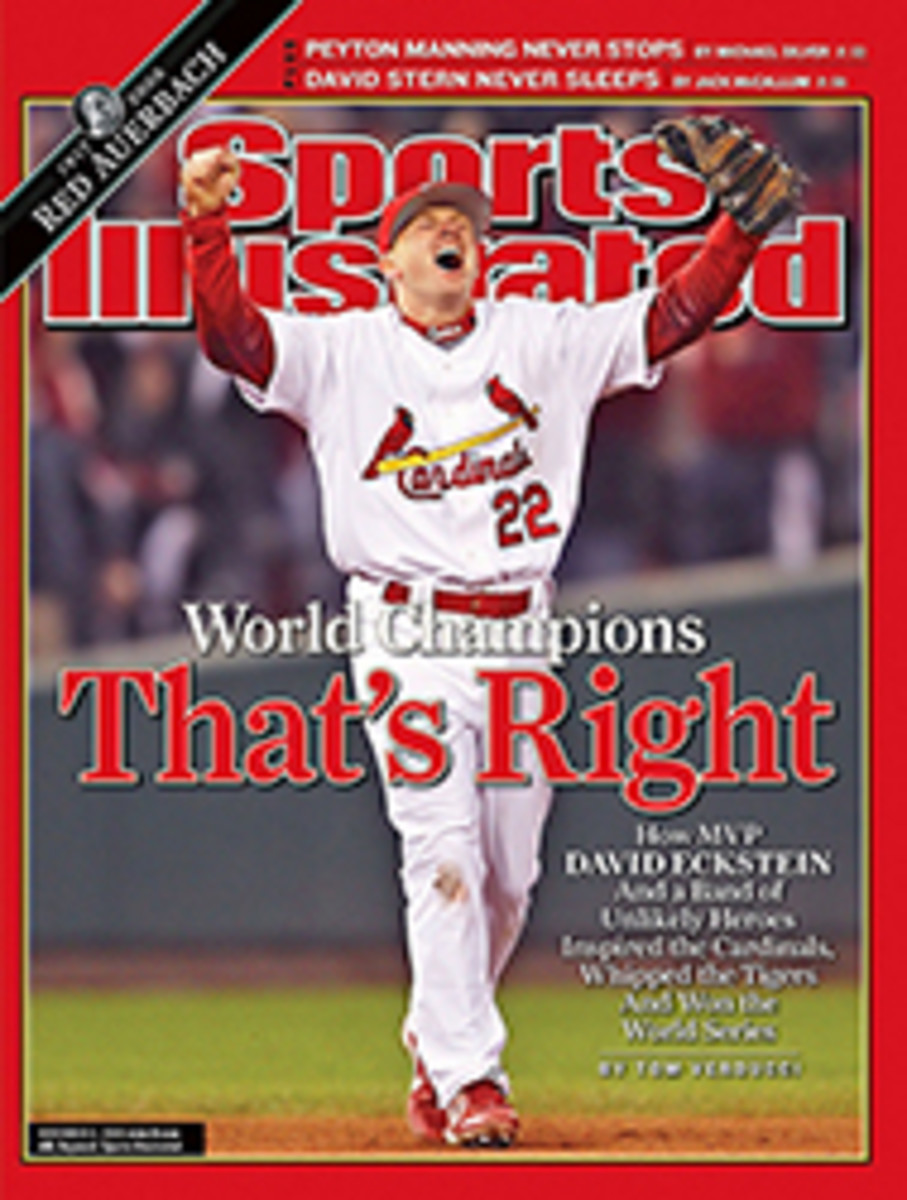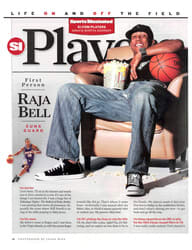
Every Picture Tells a Story
A YEAR IN SPORTS
by Neil Leifer
Abbeville Press, $55
THE WORK of the best sports photographers reaches the level of art with striking regularity. No other medium has the ability to better preserve and celebrate fleeting moments of athletic glory. And three new books prove that in very different ways.
A Year in Sports by renowned photographer Neil Leifer, 63, grew out of an assignment from SI to spend 2005 revisiting all of the top sporting events that he'd covered as a younger man, when he was a staff photographer for the magazine. This dream job, which he delightedly dubbed the Neil Leifer Senior Citizen Tour, took him and his camera to all of the year's top sports events, from Texas's Rose Bowl victory over Michigan on New Year's Day, to Giacomo's late-spring Kentucky Derby triumph, to the Chargers' December upset of the previously undefeated Colts. The resulting book, with an introduction by Frank Deford, will appeal to anyone who loves either photography or sports. For those who love both, it is a little bit of paradise.
Leifer is best known for his spectacular shot of Muhammad Ali standing menacingly over a supine Sonny Liston at the climax of their historic 1965 fight in Lewiston, Maine. It's one of several vintage works sprinkled through this book. Another is Leifer's photo of the coin toss at Super Bowl I in 1967—with the two captains from the Packers exchanging handshakes with their counterparts from the Chiefs, while a lone zebra looks on approvingly. Reproduced alongside the ridiculous scrum of press, mascots, microphones, kids and God-knows-who-else at Super Bowl XXXIX, it gives readers a chance to see how sports have changed.
But many of Leifer's tableaux from four decades past illustrate the timelessness of sports as well. Were it not for changes in fashion—hockey players of yesteryear went without helmets, golfers wore skin-hugging polyester pants, and cheerleaders wore... well, more—some of the classic shots are almost indistinguishable from those of last year.
Of course, a sports book needn't approach the realm of art in order to be delicious. Sometimes a fast-food run in an old jalopy can be more fun than brunch at Spago, and if you're in the mood for a snack that's high in calories and low in nutrition, it's hard to beat Driving Home: My Unforgettable Super Bowl Run by Jerome Bettis.
By now, everyone knows the Bus's dramatic story: In his 13th year in the NFL the Steelers running back—who won millions of fans with his diesel-like power, his Average Joe paunch and, above all, his what-you-see-is-what-you-get personality—was on the verge of retirement, having come back in 2005 for one last shot at a Super Bowl ring, the one thing that had eluded him in his storied career. The Steelers, of course, got hot and rode the Bus to a win in Super Bowl XL.
DRIVING HOME
Jerome Bettis
Triumph Books, $29.95
It's no wonder that this photographic record of Bettis's championship season debuted on The New York Times' best-seller list: Not even a crankypants like Bill Parcells could look at these photographs— Bettis in a playful Ben Roethlisberger headlock, or the Bus lying on the couch at home cradling his one-year-old daughter, Jada—without cracking a smile. The text that accompanies the pictures is mundane, but it seems safe to say that fans of the Bus are not waiting breathlessly for his philosophical musings. I f you love the Bus, you will love this book. And if you don't love the Bus, you don't love football.
Then there's the massive volume titled, simply, 106 Yards. It takes a special kind of chutzpah to self-publish a 400-page, eight pound memoir of a forgotten football player...and something far beyond that to charge $125 for the thing. The book—by Al (Hoagy) Carmichael, a running back and kick-return specialist for the Packers and the Broncos from 1953 through 1961, and published by his son, Chris—is a vanity publication through and through, for it is nothing more than the personal reminiscences and scrapbook pictures of a player with no particular claim to football history, save that he once ran back a kickoff for 106 yards (still an NFL record, albeit one that Carmichael shares with two others).
But against all odds, the book is a delight. The photographs, beautifully printed in an oversized format (the open book is more than two feet wide), present the savage violence of classic football with unusual vividness: One shows Carmichael carrying the ball upfield while one of his Packers teammates brazenly trips a 49ers defender.
106 YARDS
Al Carmichael
C&C Publishing, $125
The text is equally absorbing. Using connections he'd made as a USC player, Carmichael worked as an actor and stunt man at the Hollywood studios in the off-season. In Jim Thorpe: All American, he doubled for Burt Lancaster, who played the Native American star. In an anecdote that typifies both the surprise and charm of 106 Yards, Carmichael recalls one day during filming when Thorpe himself appeared on the set. Amazingly, the film's director, Michael Curtiz, hollered over a loudspeaker, "Get that damn Indian off the premises!"
Carmichael proudly recalls that "all the stunt men, ballplayers and other extras reacted by waging a sit-down strike, and Burt was right there among us. We refused to work unless the director allowed Jim Thorpe to stay."
It's a stroke of great fortune that Carmichael and his son have presented his experiences in such a unique and entertaining fashion.
THREE PHOTOS
ERICK W. RASCO

